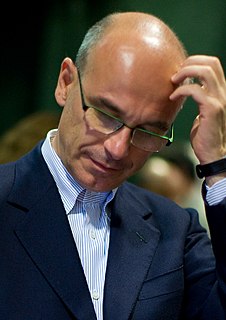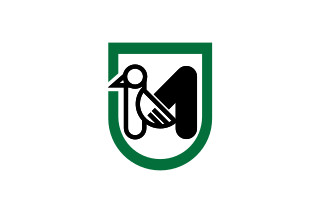
Elections to the European Parliament were held in Italy on 12 and 13 June 2004.

General elections were held in Italy on 3 June 1979, to select the Eighth Republican Parliament. This election was called just a week before the European vote: the failure to hold the two elections at the same time caused much criticism for wasting public money.

General elections were held in Italy on 14 June 1987, to select the Tenth Republican Parliament. This election marked the final inversion of the trend of the entire republican history of Italy: for the first time, the distance between the Christian Democrats and the Communists grew significantly instead of decreasing. This was seen as the result of the deindustrialization of the country. The growth of the service sector of the economy, and the leadership of former PM Bettino Craxi, gave instead a new strength to the Socialists. A remarkable novelty was the rise of the new Green Lists, while a new party obtained its first two parliamentary seats: the Northern League.

General elections were held in Italy on 5 and 6 April 1992 to select the Eleventh Republican Parliament. They were the first without the traditionally second most important political force in Italian politics, the Italian Communist Party (PCI), which had been disbanded in 1991. Most of its members split between the more democratic-socialist oriented Democratic Party of the Left (PDS), while a minority who did not want to renounce the communist tradition became the Communist Refoundation Party (PRC). However, between them they gained around 4% less than what the already declining PCI had obtained in the 1987 Italian general election, despite PRC absorbing the disbanded Proletarian Democracy (DP).

The first elections for the European Parliament in Italy were held on 10 June 1979.

The European Parliament election of 1994 in Italy was the election of the delegation from Italy to the European Parliament in 1994.

The European Parliament election of 1999 in Italy was the election of the delegation from Italy to the European Parliament in 1999.

The Sardinian regional election of 2004 took place on 12–13 June 2004.

The Politics of Emilia-Romagna, Italy takes place in a framework of a presidential representative democracy, whereby the President of Regional Government is the head of government, and of a pluriform multi-party system. Executive power is exercised by the Regional Government. Legislative power is vested in both the government and the Legislative Assembly.

The Politics of Marche, Italy takes place in a framework of a semi-presidential representative democracy, whereby the President of the Region is the head of government, and of a pluriform multi-party system. Legislative power is vested in the Regional Council, while executive power is exercised by the Regional Government led by the President, who is directly elected by the people. The current Statute, which regulates the functioning of the regional institutions, has been in force since 2004.

The Emilia-Romagna regional election of 2005 took place on 3–4 April 2005.

The Emilia-Romagna regional election of 1995 took place on 23 April 1995.

The Sardinian regional election of 2009 took place on 15–16 February 2009.

The Emilia-Romagna regional election of 2010 took place on 28–29 March 2010.

The Regional Council of Lombardy is the legislative assembly of Lombardy.

The Italian regional elections of 1975 were held on 15 and 16 June. The fifteen ordinary regions, created in 1970, elected their second assemblies. Following the 1971 census, Piedmont, Veneto and Lazio had ten more seats each.

The Italian regional elections of 1980 were held on 8 and 9 June. The fifteen ordinary regions, created in 1970, elected their third assemblies.

The Italian regional elections of 1985 were held on 12 and 13 May. The fifteen ordinary regions, created in 1970, elected their fourth assemblies.

The Italian regional elections of 1990 were held on 6 and 7 May. The fifteen ordinary regions, created in 1970, elected their fifth assemblies.

The 2020 Emilia-Romagna regional election took place in Emilia-Romagna, Italy, on 26 January 2020. The result was the victory of the centre-left coalition and the confirmation of Stefano Bonaccini as President of Emilia-Romagna, with more than 51% of votes, nearly doubling the amount of votes received in 2014.
This page is based on this
Wikipedia article Text is available under the
CC BY-SA 4.0 license; additional terms may apply.
Images, videos and audio are available under their respective licenses.

















